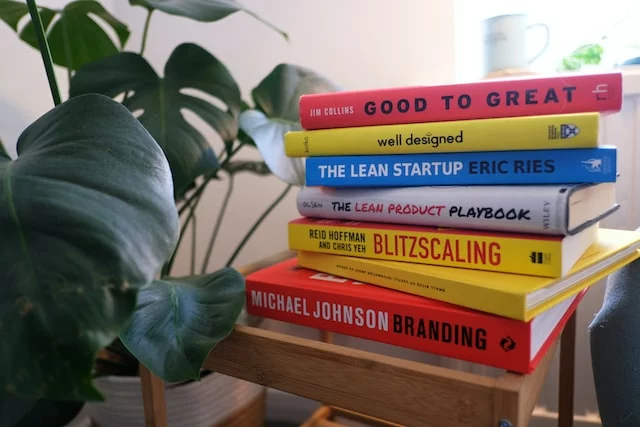The Lean Startup is a new approach being adopted by startups and enterprises alike to shorten the product development cycle, reduce risk, and increase chances of success. It is an adaptation of Lean Manufacturing principles originally developed by Toyota. The basic premise is to develop a minimum viable product (MVP) as quickly as possible, get it into market, and then rapidly iterate based on customer feedback. This allows startups to learn what works and what doesn’t with their product without incurring the huge costs associated with traditional product development cycles.
The Lean Startup has been widely adopted in recent years, and its success has been well documented.
However, there are some critics who argue that the MVP approach can lead to subpar products and that it places too much emphasis on speed over quality. Nevertheless, the Lean Startup remains a popular and effective way for startups to bring their products to market quickly and efficiently.
What is Lean Startup and how did it come about
The Lean Startup is a new way of approaching startups, characterized by its focus on speed, experimentation, and constant learning. It is the brainchild of entrepreneur and author Eric Ries, who has become something of a thought leader in Silicon Valley for his work in this area. So how did the Lean Startup come about? Let’s take a look.

In the early 2000s, the dot-com bubble had just burst and the startup world was in a state of shock. All around Silicon Valley, startups were closing their doors and laying off their employees. Eric Ries was working at one of these startups, and he was determined to find out what went wrong. He realized that the problem was not with the idea or the execution, but with the way that startups were being started in the first place. Startups were trying to do too much too quickly, without really testing or validating their ideas first.
Ries decided to try a different approach with his next startup. He would focus on building a minimum viable product (MVP) as quickly as possible and then testing it with users to see if it was actually valuable to them. He would also focus on gathering data and feedback constantly so that he could course-correct along the way. This approach became known as the Lean Startup.
The Lean Startup has since been adopted by startups all over the world, and it has been credited with helping many companies achieve success where others have failed. In fact, some of the most successful startups in recent years, including Slack, Airbnb, and Pinterest, have all used the Lean Startup methodology to get where they are today. It isn’t limited to high profile startups, even new businesses like a buffalo wings restaurant could adopt Lean Startup Principles. You could develop limited time sauces or menu items to test consumer’s preferences.
If you’re thinking about starting a startup, there’s a good chance you’ve heard of the Lean Startup methodology. This new approach to starting businesses has been gaining popularity in recent years, thanks to its focus on speed, experimentation, and constant learning.
The philosophy behind Lean Startup
Most startups begin with an idea. The founders have a vision of what they want to create and they set out to make it happen. However, the path from idea to successful business is often fraught with challenges and obstacles. That’s where the Lean Startup philosophy comes in.
Lean Startup is a methodology for building startups that emphasizes speed, iteration, and customer feedback. The goal is to shorten the time between an entrepreneur’s initial idea and a successful product or service. For example, if you start a cookie shop, you can generate new cookie recipe ideas and test them same day with your customers. Lean Startup is all about learning through experimentation and making small changes as you go instead of waiting until you have everything figured out before taking action.
The Lean Startup philosophy has its roots in the lean manufacturing movement started by Toyota in the 1950s. The goal of lean manufacturing is to eliminate waste and optimize efficiency in order to create more value for customers with less work. The Lean Startup philosophy takes those same principles and applies them to startup businesses.
There are three key concepts in Lean Startup: minimum viable product (MVP), pivot, and build-measure-learn.
- minimum viable product (MVP): A MVP is a version of a product or service that has just enough features to be usable by early adopters. The goal is to get feedback from these users as quickly as possible so that you can learn what works and what doesn’t before investing too much time and resources into developing a full-fledged product or service.
- pivot: A pivot is a change in strategy made in response to feedback from customers or other data. A startup might pivot if their MVP isn’t resonating with users, if they’re having trouble acquiring customers, or if they’re not making enough money.
- build-measure-learn: The build-measure-learn loop is the core of the Lean Startup methodology. It’s a continuous cycle of building something (usually an MVP), measuring how well it works, and then learning from that data so that you can make improvements. This cycle is repeated over and over again until you have a successful product or service.
Why Use Lean Startup? Although it was originally designed for startups, the Lean Startup methodology can be applied to any business, big or small. An energy food manufacturer could develop seasonal flavors to test how their customers respond. At its heart, Lean Startup is all about making decisions based on data instead of assumptions, which can help any business be more efficient and effective. So whether you’re just starting out or you’ve been in business for years, if you’re looking to improve your chances of success, give Lean Startup a try.
How to apply Lean Startup methodology in your business
The Lean Startup is a new way of thinking about the startup process. It is a methodology that suggests that a startup should focus on creating something small and simple first, then slowly adding more features as they learn more about what their customers want.
The main goal of the Lean Startup is to reduce the risk of failure by making sure that the startup only invests time and resources into things that are actually valuable to their customers. This is done by constantly testing and iterating on their product or service. For example, if you started a hair extension kiosk, introduce new styles to your best customers, using influencers to help test new product ideas. In this way, startups can avoid building something that no one wants, or worse, something that no one will use.
The best way to apply the Lean Startup methodology to your business is to start small and gradually build your way up. Try not to bite off more than you can chew; it’s better to have a few well-designed features than a bunch of half-finished ones. And most importantly, always be testing and iterating based on customer feedback. By following these principles, you’ll be well on your way to creating a leaner, meaner startup machine.
The Lean Startup is a new way of thinking about the startup process. It’s all about starting small and simple, then gradually adding more features as you learn more about what your customers want. Applying the Lean Startup methodology in your business can help you reduce the risk of failure by making sure you only invest time and resources into things that are actually valuable to your customers.
Best types of businesses for Lean Startup
The best type of business for a lean startup is one that solves a problem that people care about. This can be done in a number of ways, but the key is to validate your assumptions early and often. You can validate your assumptions by talking to potential customers, building a minimum viable product, and measuring customer engagement. If you’re able to validate your assumptions, then you have a good chance of success with your lean startup.
Solving a Problem People Care About
The best type of business for a lean startup is one that solves a problem that people care about. This can be done in a number of ways, but the key is to validate your assumptions early and often. You can validate your assumptions by talking to potential customers, building a minimum viable product, and measuring customer engagement. For example, if you open a supplements company, Lean Startup can help you validate your assumptions early so you can solve your customers’ problems. If you’re able to validate your assumptions, then you have a good chance of success with your lean startup.
Validating Your Assumptions
One of the most important things you can do with your lean startup is to validate your assumptions early and often. You can validate your assumptions by talking to potential customers, building a minimum viable product, and measuring customer engagement. If you’re able to validate your assumptions, then you have a good chance of success with your lean startup.
Customer Engagement
Customer engagement is another important metric to measure when determining whether or not your lean startup is successful. Engaged customers are more likely to use your product or service and recommend it to others. There are a number of ways to measure customer engagement, but some common metrics include customer retention rates, customer satisfaction scores, and Net Promoter Scores.
As an entrepreneur, it’s important to choose the right type of business to start. A lean startup is one that is focused on validation and experimentation in order to reduce risk and increase chances of success. The best type of business for a lean startup is one that solves a problem that people care about. This can be done in a number of ways, but the key is to validate your assumptions early and often by talking to potential customers, building a minimum viable product, and measuring customer engagement. If you’re able to validate your assumptions and see positive results in customer engagement metrics, then you have a good chance of success with your lean startup.

